Prime Video's epic fantasy series "The Wheel of Time," based on the books by Robert Jordan, is not your average Chosen One story. For one thing, there's confusion about who the so-called Dragon Reborn is among five possible candidates. And then there's the pesky little detail that this person may not be a savior at all – but someone destined to destroy the world. You only have to watch the show's stunning opening credits sequence to grasp the double-edged nature of power in this universe.
The main titles begins adrift in blackness before light ignites into a horizon, becoming a single white thread that starts to fray and then snaps. A riot of vibrant threads then burst across the darkness leaping and twisting, eventually weaving into a giant cosmic loom on which we see pictured seven women, one by one in a signature color, arrayed like the spokes on a wheel. But their presence is fleeting; their essences swirl together, transforming into the show's titular wheel – a dragon curled around to consume the other end. But that too fades back into the distant glimmer of the horizon before it all blinks out into darkness.
There you go: the breaking, making and then unmaking of the world in under two minutes.
It's an unwieldy concept to tackle, but speaks directly to themes in the series. Amazon Studios turned to design production studio Imaginary Forces – an aptly named company – to encapsulate the series' interpretation of power, order, chaos, eternity.
RELATED: Oh thank god, "The Wheel of Time" isn't terrible
"I love it when the universe hands you these things," Karin Fong, director at Imaginary Forces, told Salon. "There's a very famous line from the book, 'The wheel weaves as the wheel wills.' They're weaving this form of power in a way, and the idea that spells could be woven or magic is woven. So the idea was to imagine the wheel as a cosmic loom. This turning of the wheel was destiny, was time and endless – no big deal. [laughs]"
Take a look at the opening sequence for "The Wheel of Time" below:
While you can appreciate the atmospheric beauty of the main titles on their own, understanding how "The Wheel of Time" universe works allows you to follow the narrative gist. Jordan borrowed indiscriminately from a number of multicultural beliefs and mythologies, such as Hinduism and Buddhism, to establish his cyclical nature of time and creation/destruction.
As for the idea of the very fabric of the universe as a constantly forming and unraveling tapestry, that's similarly ubiquitous throughout history.
"It's related to very many mythological things, such as the [Greek] Fates," said Fong. "We all have associations of weaving a future or a destiny."
RELATED: A "Lord of the Rings" anime prequel is on the way
There's a deeper story being told among the weaving as well. But first, an abbreviated Weaving 101: two sets of threads or yarns interlace at right angles to produce fabric. The ones held straight on the loom are the warp threads, while the ones weaving in and out are the weft (or woof) threads and create the emerging pattern. A toothed bar called the beater (or comb or batten) slides down the warp to keep the weft firmly in place.
"We were looking at Anni Albers, her looming, and we tried every possible way of finding looms, video of weaving, and the mechanics of that," said Fong about researching. "With the difference being of course, we're feeling very close up, but hopefully you feel that thread goes on for miles. If we've done our job, it feel somewhat cosmic. That bar, [the beater], you don't stand in its way; it's time marching on and it's going to weave."
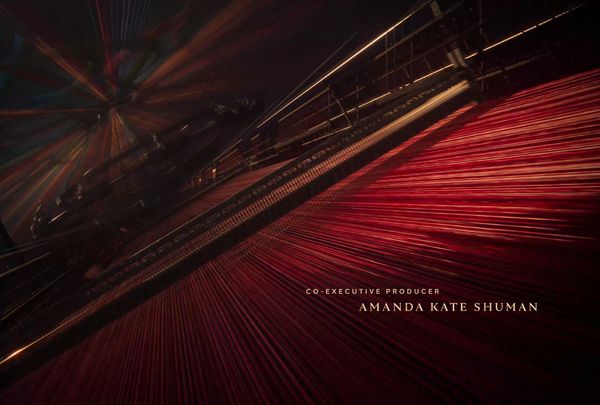 The loom in "The Wheel of Time" main titles (Imaginary Forces/Amazon Studios
The loom in "The Wheel of Time" main titles (Imaginary Forces/Amazon Studios
Here's where it gets metaphysical. In "The Wheel of Time" mythology, the Creator actually uses the lives of people as threads to weave the universe, and the people known as Aes Sedai who can channel the magic, aka One Power, allow the big wheel to keep on turnin'. In order for the fabric of the universe to remain whole, a balance must be maintained.
Except it wasn't.
As the series tells it, way back in history the Creator's counterpart known as the Dark One (or Shai'tan) began to mess with the world, and the powerful man known as the Dragon helped keep the Dark One at bay. But – in a traditionally binary view of personhood – the Dark One then tainted all the male channelers so that they went mad and started wreaking havoc through world, destroying cities, causing earthquakes for centuries. Eventually all of them were either subdued or died, leaving only women with the ability to channel.
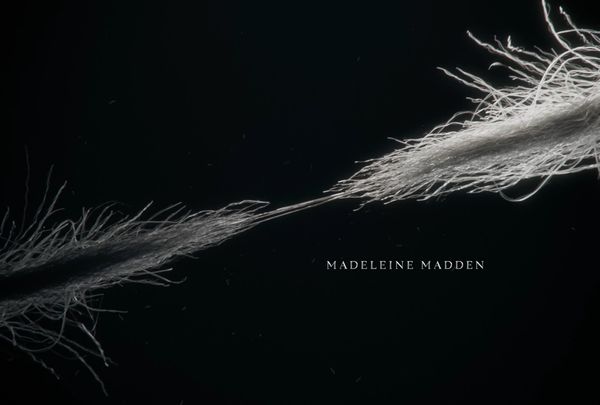 The breaking of the world in "The Wheel of Time" main titles (Imaginary Forces/Amazon Studios
The breaking of the world in "The Wheel of Time" main titles (Imaginary Forces/Amazon Studios
"There's this really huge event that's called the breaking of the world," said Fong. "As in many different origins stories, including our own Bible, everything's in balance and then it breaks loose. So the idea that we could play with scale there where you think you're on a gigantic horizon, and then it reveals to be a thread and that breaking of the thread symbolizes breaking the world."
But wait, there's more weaving metaphors going on with the introduction of color as well.
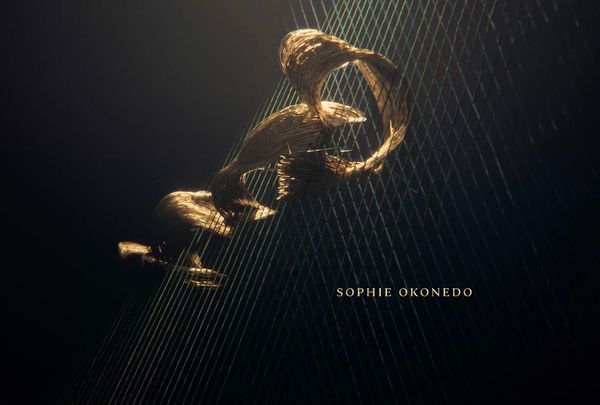 The rogue gold fibers in "The Wheel of Time" main titles (Imaginary Forces/Amazon Studios
The rogue gold fibers in "The Wheel of Time" main titles (Imaginary Forces/Amazon Studios
"This has a real arc where you see that it breaks and it's monochromatic, it's black and white," said Fong. "And then you start to see gold come in. It's beautiful and lyrical. But it's also unpredictable, it kind of spazzes out sometimes. That symbolizes the One Power, this incredible power that's very hard to channel, hard to control.
"A weave is more or less a grid, a very organized sort of way of doing things. But then you've got this gold thread, who's kind of whipping through lyrically and painting its way through, kind of a disrupter of the weave," she continued. "So we have this metaphor going on where these powerful waves or colors – like when the blue comes in, it's like a tidal wave of blue. And then you're seeing the the gold constantly assert itself. The climax of this is this silhouette of the woman. She's very small on the loom, and pow! A whole bunch of gold explodes behind her. You're playing with something that's controllable."
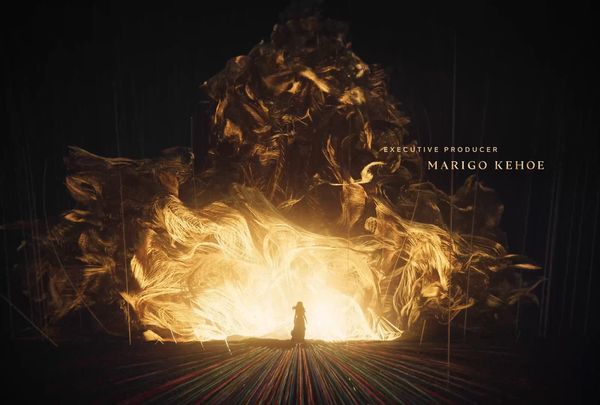 The explosion of power in "The Wheel of Time" main titles (Imaginary Forces/Amazon Studios
The explosion of power in "The Wheel of Time" main titles (Imaginary Forces/Amazon Studios
By now, it's clear why the only Aes Sedai on the show are women and prevalent in the opening sequence, which also highlights the central imbalance on "The Wheel of Time."
"It's gripping from the very first because it's the story where the women are channeling the power, and the breaking of the world is that rupture between the sexes," said Fong. "There's always this tension of balance . . . and when it shifts so one side overtakes, something goes out of whack."
The Aes Sedai each fall into a specific color Ajah, which indicates their specialty or role, such as healer or warrior. The main titles gives an early glimpse of one when the threads coalesce into the image of the Red Ajah (seen in main photo). "One of our artists, Henry [Chang], did the Red Ajah trick where you have parts of a picture on different layers. But you could only see it visibly if you put the camera right in the right place," said Fong.
While Imaginary Forces portrays each Ajah in the opening sequence, they're not modeled after specific actors on the show. For example, the Blue Ajah does not look like Rosamund Pike's character Moiraine Damodred.
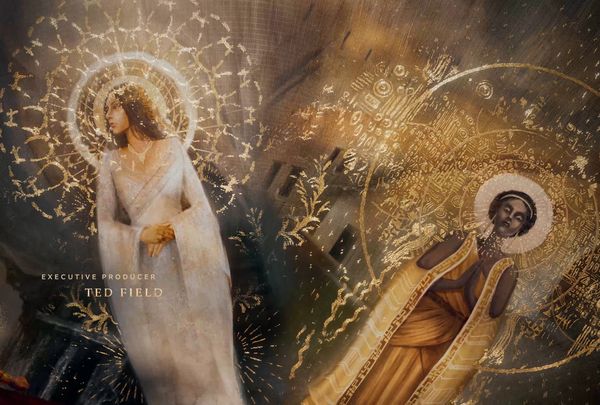 The White and Yellow Ajahs in "The Wheel of Time" main titles (Imaginary Forces/Amazon Studios
The White and Yellow Ajahs in "The Wheel of Time" main titles (Imaginary Forces/Amazon Studios
"We're just pinpointing one slice on the Wheel of Time," said Fong. "What will go on? What has been forever? And what will go on forever? That's why our Ajahs we're depicting aren't the people in the show. They're kind of composite images, about the ideas of what they stand for."
Also, the depiction of Ajahs, like the casting on the show, is more inclusive than the traditional fantasy properties like "The Lord of the Rings" and "Game of Thrones."
"We were trying to make these amalgamations where it's very futuristic, giving you the sense that, as the world gets more mixed, cultures kind of mash up together."
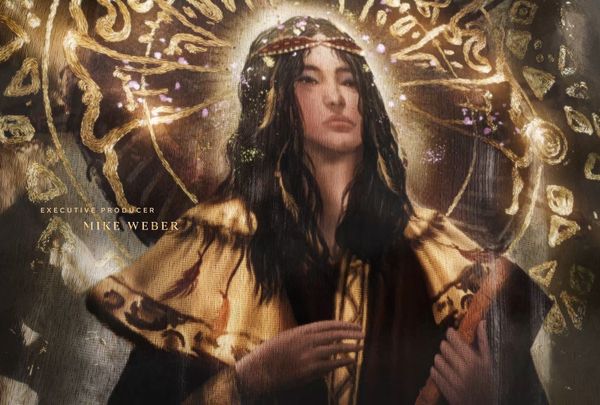 The Brown Ajah in "The Wheel of Time" main titles (Imaginary Forces/Amazon Studios
The Brown Ajah in "The Wheel of Time" main titles (Imaginary Forces/Amazon Studios
Each Ajah's design drew from a range of influences, from art history and fashion to tarot cards and actual historical figures like warriors, nobles and saints. Naturally multicultural influences from Japanese and Chinese to Middle Eastern and African also came into play, whether it's in the texture of fabrics for each gown to the background imagery.
"Ailis O'Reilly began the design process by collage-sketching each Ajah, working out her pose and dress, and adding diverse influences. An art nouveau motif as part of a headdress, for example, or Chinese-style clouds emitting from a halo," said Fong.
Want a daily wrap-up of all the news and commentary Salon has to offer? Subscribe to our morning newsletter, Crash Course.
"It became evident that each Ajah would need her own distinct nimbus, and that became part of the challenge as well as an opportunity to differentiate the portraits. One has particles influenced by Klimt, while another gets a full-on Russian icon gold disk," she continued.
"Each Ajah appears in a natural or architectural setting, coming together to hint at the show's various locales and mix of eastern and western culture. From there, Ella Lee created the final illustrations, using our composite portraits as a reference for her detailed, original renderings."
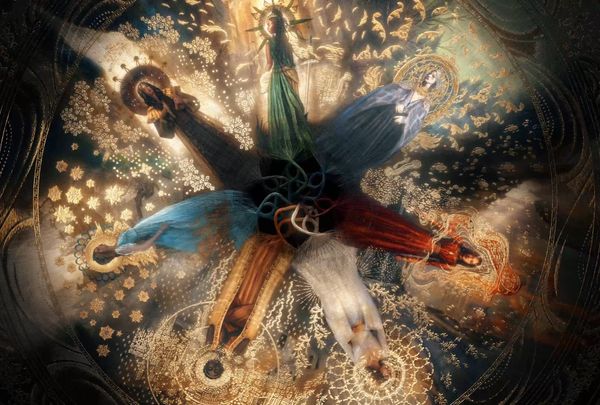 The seven ajahs in "The Wheel of Time" main titles (Imaginary Forces/Amazon Studios
The seven ajahs in "The Wheel of Time" main titles (Imaginary Forces/Amazon Studios
Here's a breakdown of each Ajah by color:
Red Ajah
The Red sisters hunt down and punish the wrong and dangerous misuse of the One Power, especially by male channelers who can still go mad due to the Dark One's lingering influence. That's why she's pictured with a whip.
Gray Ajah
"The Gray is into politics and mediations, so she's got a cape and she's almost judge-like. We originally did her with red hair, but we turned her hair gray," said Fong.
Brown Ajah
Th Brown sisters are the gatherers and keepers of knowledge. In her design, she carries a book.
Green Ajah
"Green is the warrior. We took a couple tries on her," said Fong. "At first she was much more benign when we first had painted her, but then we gave her one arm in armor with her dress. I think I was looking at a fashion designer's book or something and there was this beautiful gauzy dress that had this piece of armor, and we were also looking at tarot where there's a lot of Joan of Arc kind of imagery. All of that fed into the Green Ajah.
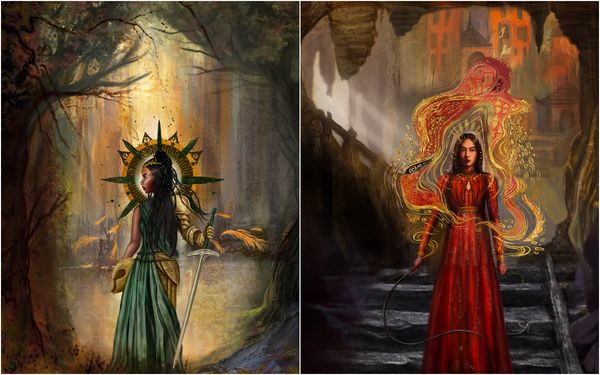 The Green and Red Ajah concept designs for "The Wheel of Time" main titles (Imaginary Forces
The Green and Red Ajah concept designs for "The Wheel of Time" main titles (Imaginary Forces
Yellow Ajah
These are the healers, and this is reflected by the way she is holding her hands in the main titles.
White Ajah
"White is logic and philosophy so she's got a kind of cathedral-like background," said Fong.
Blue Ajah
The Blue sisters are concerned with causes of righteousness and justice. Although the Blue Ajah depicted is not based on any of the actors on the show, her face is inspired by one of Fong's co-workers who is a huge fan of Jordan's books and offered research insight into that world.
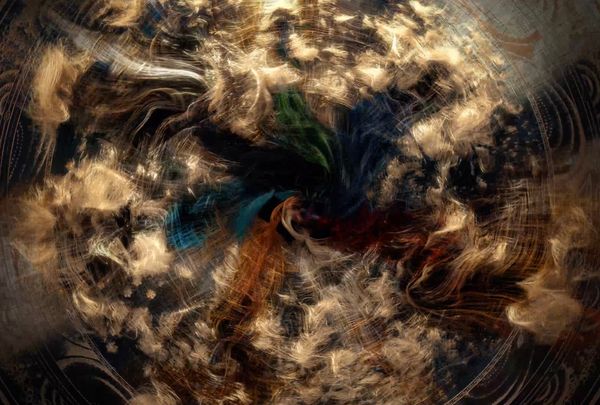 The ajahs unravel in "The Wheel of Time" main titles (Imaginary Forces/Amazon Studios
The ajahs unravel in "The Wheel of Time" main titles (Imaginary Forces/Amazon Studios
As soon as all the Ajahs are seen onscreen, however, they start to swirl together like different paint colors, unraveling what has just been woven. This leads to the actual title, "The Wheel of Time" with the wheel behind it, depicted as a dragon consuming its own tail, which is a nod to the ouroboros imagery seen all around the world in Chinese, Greek, Egyptian, Norse and Indian history and mythology, among others. This was a fresh Imaginary Forces interpretation of the logo, different from the ones fans of the books already knew.
"The Aes Sedai have have an infinity serpent that plays very heavily into their symbols and iconography . . . and [showrunner Rafe Judkins] had these pictures of the Balinese dragons that he had really become enamored of. We worked on the head and a whole exploration of the kind of scales and how much and how little to use. We did not want to make it necessarily that Western dragon you see all the time, but obviously alluding to it as well."
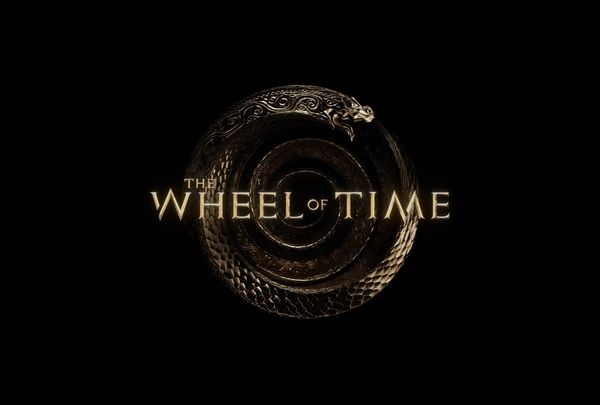 The "The Wheel of Time" logo (Imaginary Forces/Amazon Studios
The "The Wheel of Time" logo (Imaginary Forces/Amazon Studios
"And one thing that's sort of interesting that makes for an interesting CG or modeling puzzle is that ours is a Möbius strip; it's an endless spiral. So it's not just the ring – that would make it too close to other ring-like properties."
Fong also points out how the "w" in "Wheel" and "m" in "Time" are the same design but flipped, almost like the concept of Yin/Yang.
And just like everything else associated with the series, the title itself also goes away.
"The idea is that it's going to unravel as soon as we see it. It's endless, weaving and unraveling. This ends again with a singular horizon. So the idea is it almost loops. We're ready – there's a horizon there built for season 2.
"The Wheel of Time" season 1 is now available to stream on Prime Video.
More stories you might like:
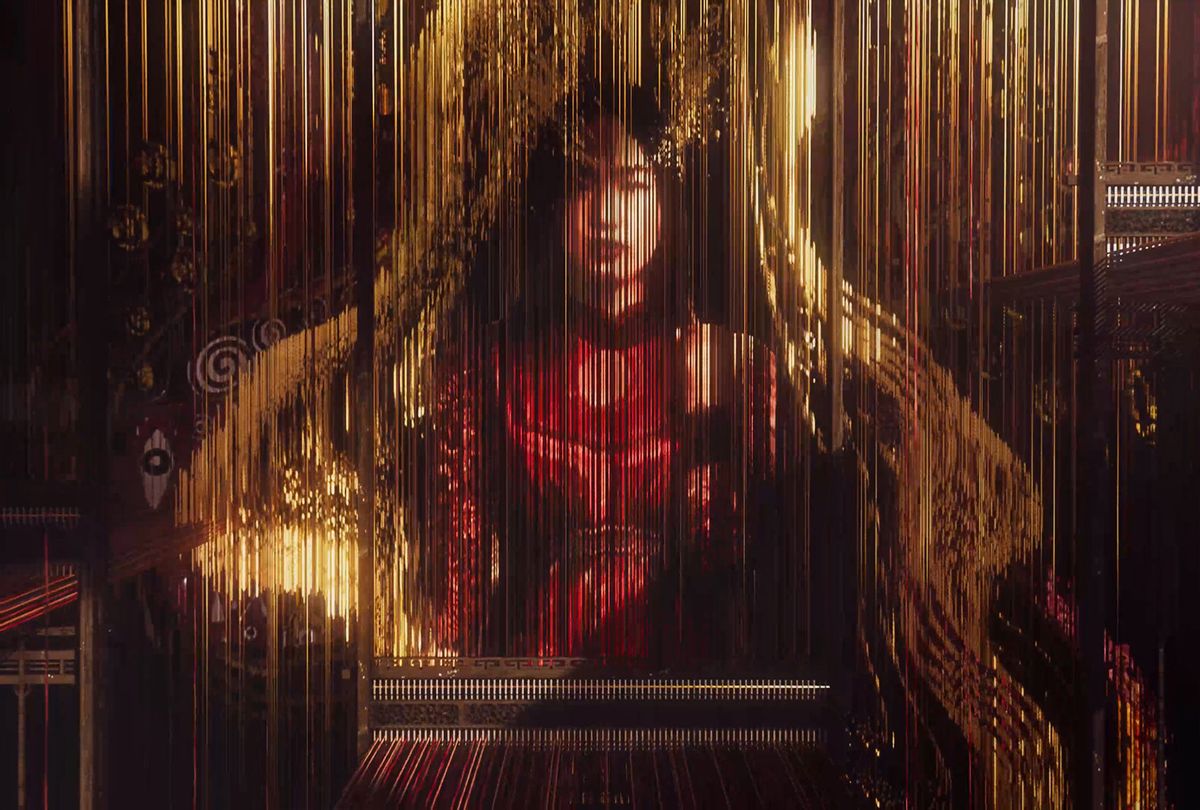
Shares